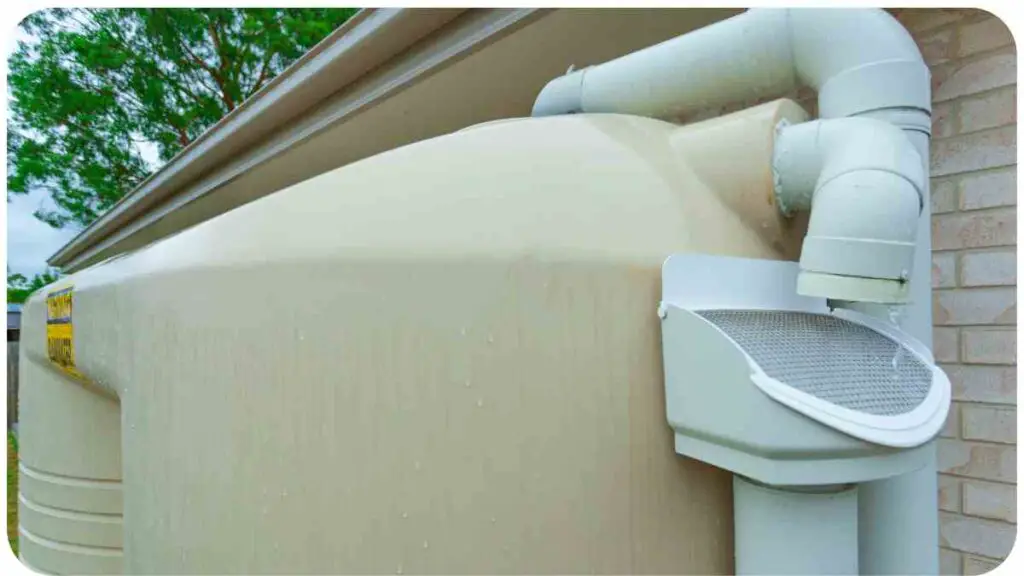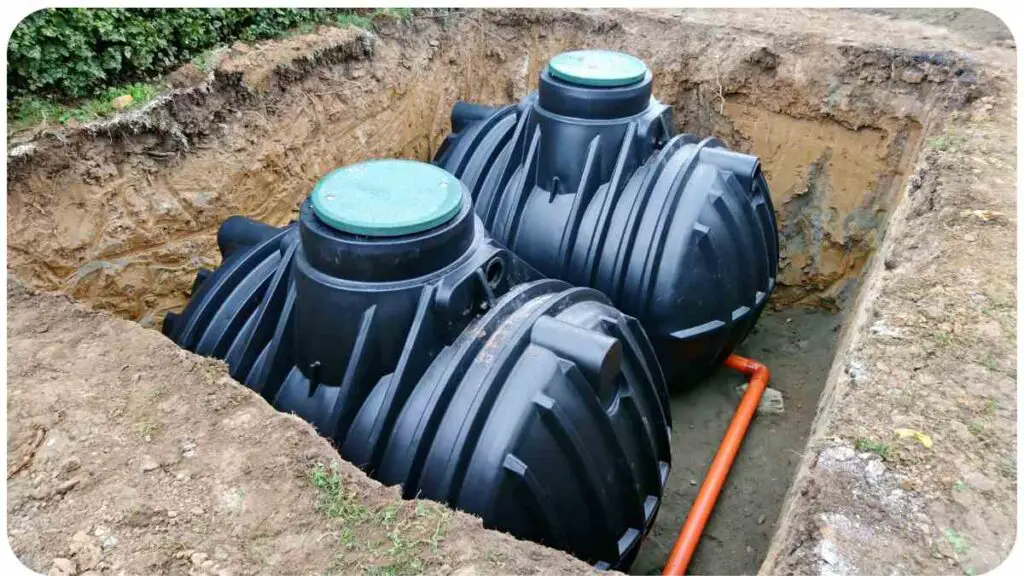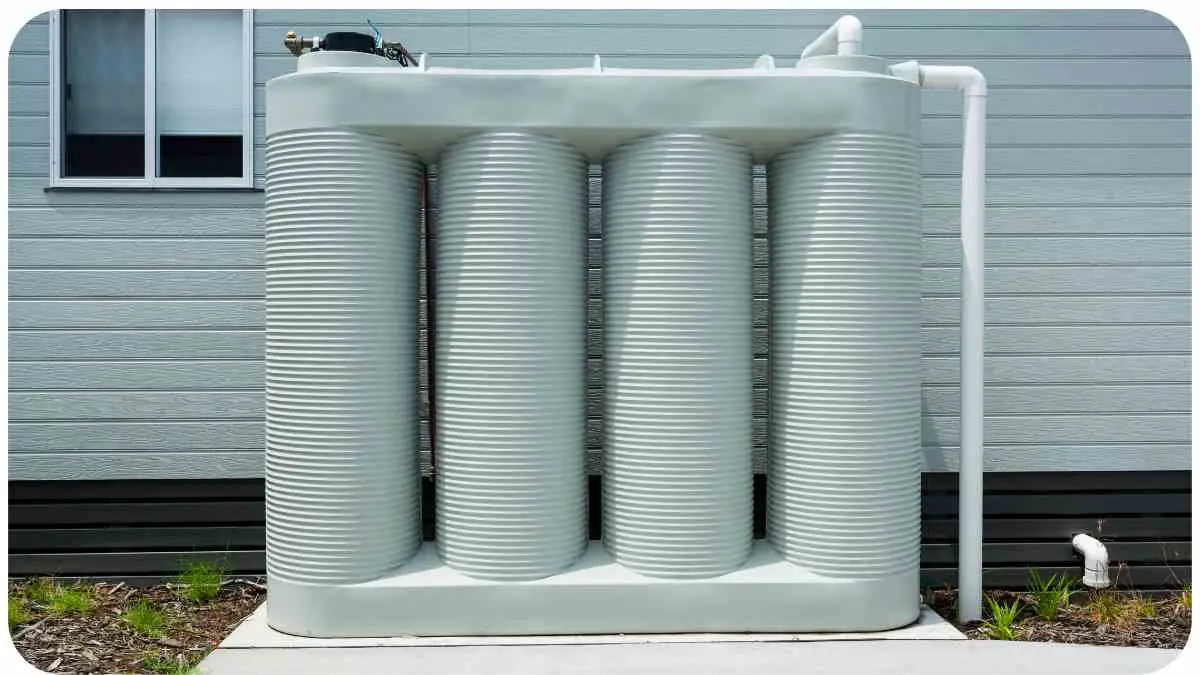Picture this: you’ve embraced eco-friendly practices by installing a rainwater harvesting system to conserve water and reduce your environmental footprint. But, alas, you notice a hiccup – your system isn’t working as expected.
Don’t worry, as a seasoned rainwater harvesting enthusiast, I’ve encountered my fair share of challenges.
In this guide, we’ll dive into troubleshooting your rainwater harvesting system step by step, while weaving in expert advice, personal anecdotes, and handy tables to help you along the way.
| Key Takeaways |
|---|
| 1. Rainwater harvesting conserves water and reduces costs. |
| 2. Address common issues like clogged filters promptly. |
| 3. Regular maintenance prevents pump failures and contamination. |
| 4. Evaluate tank size and placement for optimal performance. |
| 5. Upgrade your system as your needs evolve. |
| 6. Professional advice can guide major system enhancements. |
| 7. Contributing to sustainability benefits the environment. |
Understanding Rainwater Harvesting Systems
Rainwater harvesting is a brilliant way to harness the natural resource that falls from the sky and put it to good use.
By collecting rainwater from rooftops and other surfaces, you can significantly reduce your reliance on traditional water sources. However, even the best systems can encounter issues over time. Let’s explore some common culprits.
If your rainwater harvesting system isn’t performing as expected, you might also want to ensure your outdoor space is well-maintained. Learn more about cleaning artificial grass to enhance the overall appearance and functionality of your outdoor area.
Benefits of Rainwater Harvesting

Before we delve into troubleshooting, let’s remind ourselves why rainwater harvesting is a game-changer. Not only does it conserve water and lower utility bills, but it also reduces stormwater runoff, which can carry pollutants to water bodies.
By using rainwater for irrigation, flushing toilets, and laundry, you’re taking a proactive step towards a sustainable future.
Common Issues with Rainwater Harvesting Systems
Insufficient Rainfall Collection
Your rainwater system’s efficiency relies on the amount of rainfall it can collect. If you’re in an area with erratic rainfall patterns, your system might underperform. Check historical rainfall data and consider supplementing your supply during drier months.
Table: Rainfall Patterns
| Month | Average Rainfall (inches) |
| January | 2.5 |
| February | 3.0 |
| March | 4.2 |
| April | 1.8 |
Clogged Gutters and Filters
Over time, leaves, twigs, and debris can clog your gutters and filters. A clogged system won’t collect rainwater effectively. Regular maintenance, especially before the rainy season, can prevent this issue.
Table: Maintenance Schedule
| Task | Frequency |
| Gutter Cleaning | Every 3 months |
| Filter Inspection | Every 2 months |
| System Flushing | Every 6 months |
Improper Tank Sizing
The size of your rainwater storage tank matters. If it’s too small, you’ll run out of water during dry spells. Conversely, an oversized tank might lead to stagnation and water quality issues. Let’s ensure your tank is just right.
Is your rainwater harvesting system facing drainage issues? Discover effective methods to dry out artificial grass that can potentially help resolve drainage-related problems and optimize the performance of your outdoor systems.
Table: Tank Sizing Guidelines
| Household Size | Recommended Tank Capacity (gallons) |
| 1-2 people | 500 – 1000 |
| 3-4 people | 1000 – 1500 |
| 5+ people | 1500 – 2000+ |
Pump Failures
A malfunctioning pump can throw a wrench into your rainwater harvesting plans. Listen for unusual noises and ensure the pump is properly connected. Regular pump maintenance, including checking for blockages, can prevent sudden failures.
Table: Pump Maintenance
| Task | Frequency |
| Check for Noise | Monthly |
| Inspect Connections | Every 3 months |
| Clear Blockages | Every 6 months |
Contaminated Water
Water quality is paramount. If your harvested rainwater smells off or looks discolored, it’s a red flag. Contaminants could have found their way into your system. Regular water testing and the use of proper filters are essential.
Table: Water Quality Testing
| Parameter | Recommended Frequency |
| Visual Inspection | Monthly |
| Comprehensive Test | Every 6 months |
Troubleshooting Your Rainwater Harvesting System

Step 1: Inspect Rainfall Collection Setup
Take a stroll around your property during the next rainfall. Observe how water flows off your roof. If you notice uneven distribution, it might be time to adjust gutters or downspouts.
If you’re encountering difficulties with your rainwater harvesting system, you’re not alone. Explore these common irrigation system troubleshooting tips to identify and address issues, ensuring your water collection system functions efficiently.
Step 2: Clear Gutters and Filters
As mentioned earlier, clogged gutters and filters can cripple your system. Set a reminder to perform routine maintenance, ensuring a seamless flow of water.
Step 3: Evaluate Tank Size and Placement
Refer to the tank sizing guidelines to determine if your tank capacity suits your needs. Additionally, assess the tank’s location – it should be level and free from overhanging branches that could drop debris.
Step 4: Check Pump Functionality
Turn on the pump and listen for any unusual sounds. If you suspect an issue, consult the pump’s manual for troubleshooting steps. Regular maintenance will prevent unexpected pump failures.
Step 5: Ensure Water Quality
Conduct regular visual inspections and comprehensive water tests. If you detect any anomalies, address them promptly to maintain the integrity of your harvested rainwater.
Expert Tips for Maintaining Your System
Now that we’ve covered troubleshooting steps, let’s talk about keeping your rainwater harvesting system in top-notch condition.
- Stay Consistent with Maintenance: Make a maintenance schedule and stick to it. Consistency is key to preventing issues before they escalate.
- Use High-Quality Filters: Invest in quality filters that effectively remove debris and contaminants. This will extend the life of your system and improve water quality.
- Monitor Water Usage: Keep an eye on how much water your household uses. This helps you adjust your practices based on your rainwater supply.
- Educate Yourself: Learn about local regulations, rebates, and incentives for rainwater harvesting. Staying informed can help you make the most of your system.
- Engage Professionals: If you’re unsure about any aspect of your system, consult professionals who specialize in rainwater harvesting. Their expertise can be invaluable.
Upgrading Your Rainwater Harvesting System
As time goes on, you might want to enhance your rainwater harvesting setup. Here’s how to go about it.
Assessing Water Needs
Evaluate your water consumption patterns. Have they changed since you first installed the system? This will guide you in deciding whether to upgrade your tank’s capacity.
Uneven grass can impact the functionality of various outdoor systems, including rainwater harvesting. Learn how to fix uneven grass for a more uniform lawn, potentially contributing to the proper functioning of your rainwater collection setup.
Choosing the Right Components
Research the latest advancements in rainwater harvesting technology. Upgrading components like pumps, filters, and storage tanks can optimize your system’s efficiency.
Professional Consultation
If you’re considering a major upgrade, consulting a rainwater harvesting professional is wise. They can help you design a system that perfectly fits your needs and goals.
Real-life Success Stories
Overcoming System Design Flaws
I once faced a design flaw that led to water stagnation in my tank. By repositioning the tank and adding a baffle, I improved water circulation and quality.
Transforming Water Management Practices
A friend’s system struggled during dry spells. They addressed this by incorporating a backup water source, ensuring a consistent water supply year-round.
Environmental Impact and Sustainability
By troubleshooting and maintaining your rainwater harvesting system, you’re contributing to a more sustainable future. Every drop of harvested rainwater reduces strain on municipal water supplies and decreases stormwater runoff’s impact on the environment.
Conclusion
Rainwater harvesting is an eco-conscious endeavor, but it comes with its share of challenges. Remember, troubleshooting and maintaining your system can turn these challenges into opportunities for growth. Regular inspections, maintenance, and the occasional upgrade will keep your system efficient, sustainable, and a source of pride for years to come. Happy harvesting!
Pest issues can affect the health of your garden and, indirectly, your rainwater harvesting system’s performance. Arm yourself with effective pest control strategies to safeguard your outdoor space and maintain the functionality of all its components.
Further Reading
For more in-depth insights and solutions related to rainwater harvesting system issues, consider checking out the following resources:
- Common Problems with Rainwater Harvesting Systems: This blog post by GRAF highlights typical problems that can arise with rainwater harvesting systems and provides practical solutions to address them.
- Troubleshooting Rainwater Harvesting Tanks: In this article by Owls Hall Environmental, you’ll find a detailed discussion of common issues that affect rainwater harvesting tanks and how to troubleshoot them effectively.
- Solving Common Pump Issues in Rainwater Harvesting Systems: Grundfos offers a comprehensive course on addressing pump-related challenges in rainwater harvesting systems, providing valuable insights for maintaining the heart of your setup.
FAQs
How often should I clean my gutters and filters?
Regular maintenance is essential for efficient rainwater collection. Clean gutters and filters every 3 months to ensure a smooth flow of water.
Can I use harvested rainwater for drinking?
While harvested rainwater can be safe for many uses, it’s generally not recommended for drinking without proper treatment due to potential contaminants.
What should I do if my pump is making unusual noises?
Unusual pump noises can indicate blockages or malfunctions. Turn off the pump and consult the manufacturer’s manual or a professional for guidance.
How do I know if my tank is the right size?
Evaluate your household’s water needs based on the tank sizing guidelines provided earlier. Consider factors like family size and water consumption patterns.
What’s the benefit of professional consultation for rainwater system upgrades?
Consulting professionals ensures that your system upgrade is well-planned and aligned with your goals. They can offer tailored advice and help you avoid potential pitfalls.

Hi! My name is Hellen James, and I’m here to help you with your home-maintenance needs. Whether it’s building a better yard or just trying to fix a garden—I can show you how.


